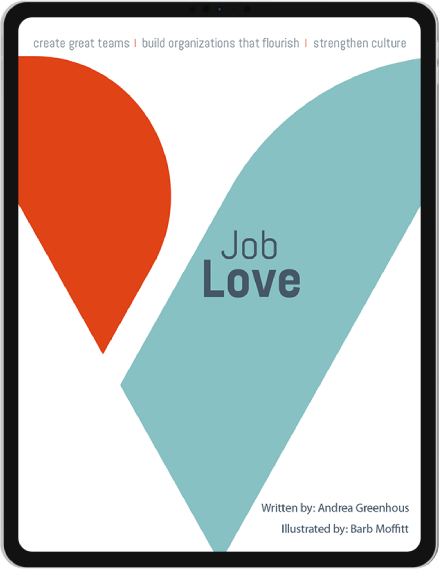If you scroll through LinkedIn on a typical day, you’ll likely come across countless posts from people expressing their frustration with the place of internal communications in the world.
Do these sound familiar?
- We don’t have a seat at the table
- Leaders are evil and have no clue what they are doing
- No one takes us seriously
- We need to start saying no
- We need to be perfect (typos are entirely unacceptable)
It needs to stop.
Sure, it’s fun to gripe. And there’s that old saying that misery loves company, which feeds the sad reality that algorithms favour negative viewpoints, so these posts get more views, likes, and visibility.
The tragedy is that the story we are telling ourselves perpetuates the limiting beliefs that hold us back.
Limiting beliefs are thoughts, convictions, or opinions that we believe are absolute truths that hold us back from achieving our goals, growing, or becoming the people we want to be. These beliefs can be about ourselves, the world, or life in general and often manifest as negative self-talk, excuses, or assumptions that prevent us from taking action or pursuing opportunities.
Changing the narrative
It’s time to change the stories we tell ourselves and shed the limiting beliefs preventing internal communications professionals from achieving great things. Here are five ways to start.
Let go of perfectionism
As a reformed perfectionist, I know the pressure to achieve perfection can cause us to overthink, procrastinate, and ultimately focus on the wrong things. I’d honestly rather have a typo in a message from the CEO that moves people to action than a flawless email that people ignore. Focusing on perfection can cause us to lose sight of strategy, timeliness, relevance, and authenticity. Similarly, the environments we work in will never be perfect — there will always be change, a scarcity of resources, and competing priorities. Instead of waiting for things to be perfect, we need to understand that organizations today operate in a complex and ever-changing environment and that means the perfect circumstances will forever be elusive.
The solution is to switch our focus, to change the story to one in which communication professionals are unapologetically human and make mistakes like everyone else and embrace imperfection in our organizations too. When we recognize that we, and by extension our work, are imperfect, we can build trust and connection.
Stop focusing on what’s wrong
Instead of wallowing, we need to focus on what is good about our work. Where are the stories of employees connected by a shared purpose because of a moving town hall? Or the successful transformation because of a communication strategy that prioritized listening? And what about the ESG initiative that all employees embraced to accelerate the organization’s road to net zero?
By amplifying our wins and successes, we can reimagine what’s possible. We can thrive on the stories of how we have made a difference and the positive impact our profession has on the world. What positive stories can you share?
Steer clear of mediocrity
Limiting beliefs about the internal communication profession can lead to complacency and a lack of innovation in our work. I’ll admit that I am often overly optimistic about the power and influence of internal communication. Still, I’d rather be a believer in the potential of internal communication for creating a better employee experience and supporting an organization’s success than someone who accepts mediocrity and doesn’t strive for excellence. The difference is our mindset.
When we set our sights high, we think about the possibilities, not the limitations. We use creativity and innovation to achieve more. Early in my career, I did a lot of government consulting. Often, there were strict limitations on what we could do from a tactical perspective, which necessitated a well-researched strategy, leadership buy-in, and innovative approaches to implementation. We had to think big to overcome the limitations we faced.
Stop the blame game
How often do we blame leaders, the IT department, or managers for making our lives difficult? The problem is that when we blame others, we don’t take accountability, and when we point fingers and find fault with others, we don’t spend time listening, understanding, and empathizing.
A better way is to live with generosity. In her book Rising Strong, Brené Brown describes generosity as “extending the most generous interpretation possible to the intentions, words, and actions of others.” When we start thinking that leaders, the IT department, and managers are all doing their absolute best, we stop the blame game. And when we stop the blame game, we start fostering and nourishing relationships with generosity and empathy that can help us achieve better results and work with other people across the organization to tackle challenges together.
Understand that change is possible
Our limiting beliefs have us stuck in a rut, churning out identical versions of a story that limits our capacity for change. They have us relying on clickbait for visibility and confirmation bias to justify our thinking. But we can’t change if we focus solely on what’s not working.
Change starts with a vision for a better tomorrow. A positive vision provides motivation and inspiration for internal communication professionals. It can shift our focus from problems and challenges to opportunities and possibilities and bring us together to remind ourselves of our goal of being a valued business partner. Change also requires a growth mindset, where all communication professionals are willing to embrace the problems we face as opportunities for change rather than obstacles to avoid. It’s about leaning into our weaknesses and, rather than blaming others, finding ways to turn them into strengths. For example, we spend a lot of time educating our clients and helping them better understand the difference we can make. The benefits of this one simple effort are that we have better buy-in, support, and often have the scope of our work expanded.
Are we ready for a new narrative?
The internal communication profession has an incredible opportunity to solve the extraordinary challenges that organizations face right now. But first, we need to shed our limiting beliefs and start changing the narrative we tell ourselves.
And hey – it goes without saying, if you want help in letting go of limiting beliefs and need a partner to help you achieve great things, please connect with us. We’d love to help.
“Change will not come if we wait for some other person or some other time. We are the ones we’ve been waiting for. We are the change that we seek.”
~ Barack Obama






